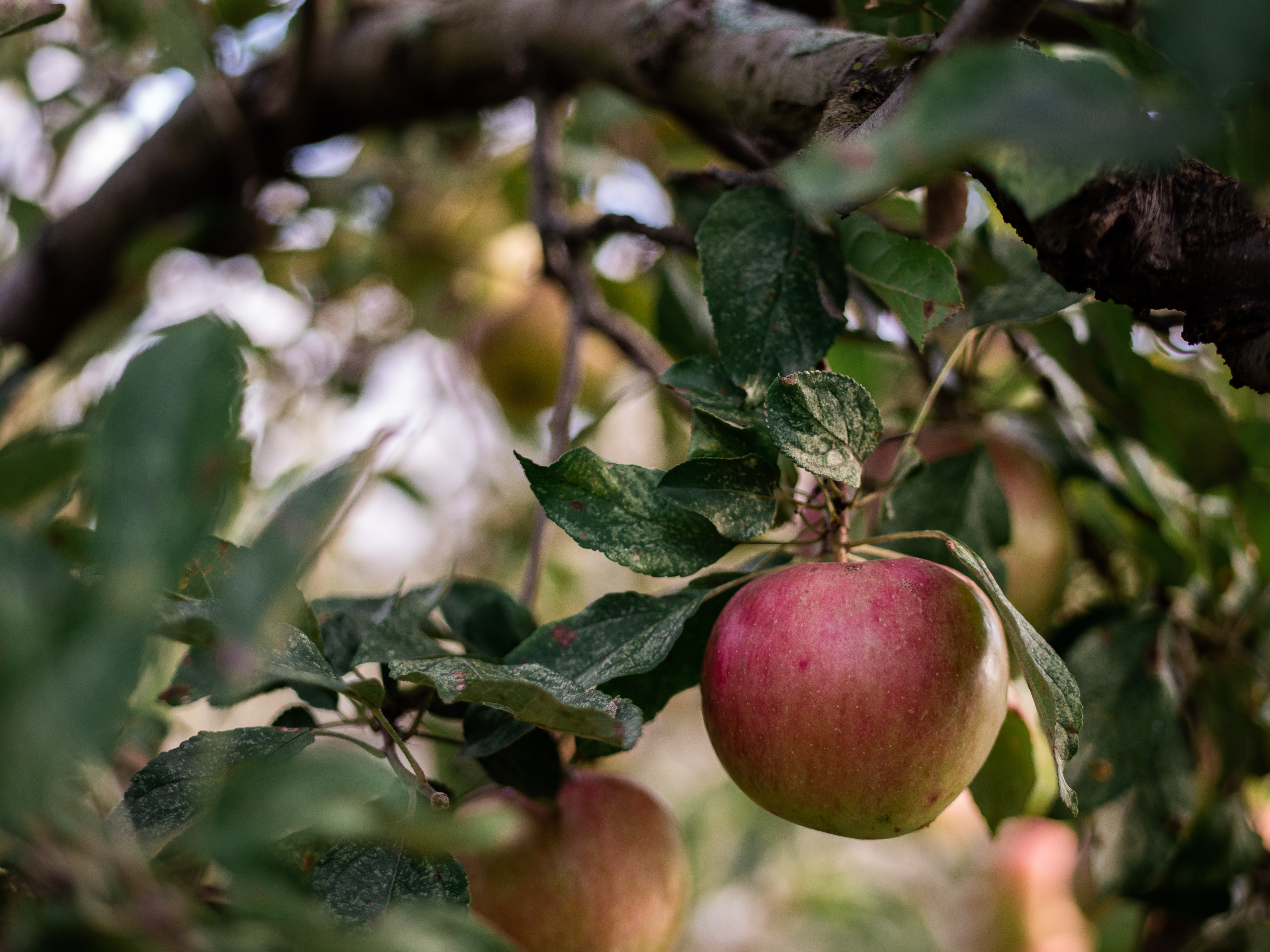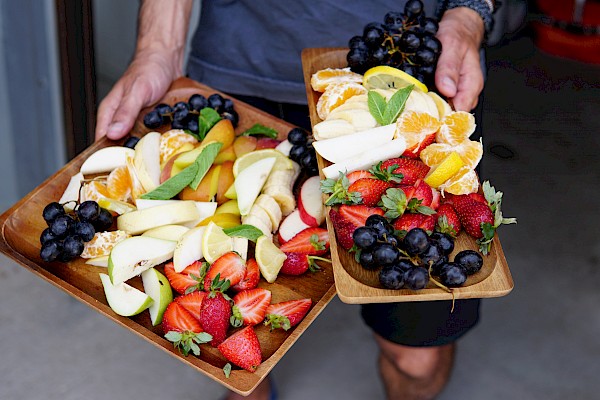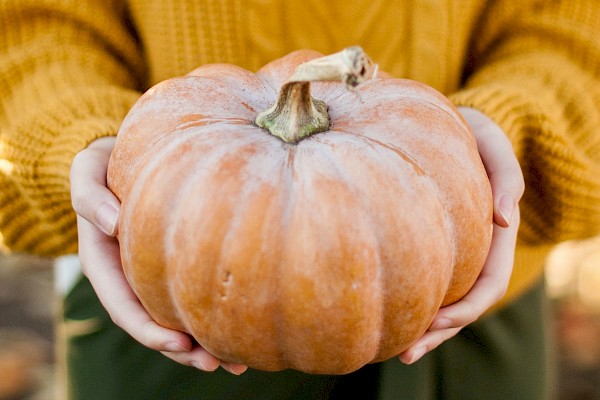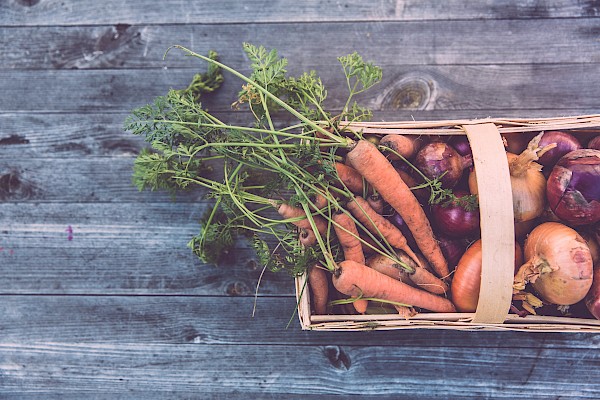An apple a day…
…keeps the doctor away. Pretty much everyone knows this English saying – but is it true? Are apples really that healthy? We investigate this in today’s article and provide you with more exciting facts about Switzerland’s favourite fruit.
Every year approximately 16 kg apples per head are consumed here. Is the apple one of your favourite fruits too?
Are all apples the same?
Not at all! More than 20,000 varieties of apple are grown round the world. Many of them are green, but others are red or yellow. Some varieties are not just one colour, but rather two or even three. The colours develop as the apple ripens – at the start, all apples look the same – green. While the Granny Smith, the classic green apple, is always green, the Eierlederapfel is yellow and the Berner Rosen turns a deep red colour.
Apples do not just differ in colour and flavour; they also contain different substances depending on the apple variety. Green apples contain a lot of chlorophyll, the pigment that also makes leaves green. As the apples ripen, the chlorophyll in some varieties is gradually broken down, so they become yellow. Unlike other apple varieties, yellow apples contain large quantities of carotene, the natural yellow substance that can also be found in many other red and yellow fruits and vegetables. As the fruit ripens, carotene is what makes the peel yellow in varieties such as Eierlederapfel or Golden Delicious. By contrast, if the apple is red like the Jonagold or the Berner Rose, ripening creates a lot of anthocyanins. This red pigment in the apple peel acts as an antioxidant and can prevent damage from too much sun exposure. In this way the fruits are protected from the sun’s damaging UV rays. If you have ever wondered why some apples have red spots on the peel, this is simply because these places were exposed to particularly strong sun.
Is red really sweeter than yellow?
Do you also think that bright red apples taste sweeter than green or yellow ones? Although the strong colour may lead us to assume that the red varieties are sweeter than green or yellow apples per se, this is a myth. The variety Belle de Boskoop is a good example of this “optical illusion”. Boskoop apples are frequently deep red and just looking at them makes your mouth water, but when you take your first bite, you meet an unpleasant, sour surprise. That is why the Belle de Boskoop is often used for cooking and baking.
On the subject of sweetness, and contrary to what you might expect, a sweet taste is not an indicator for an apple’s high sugar content, it’s just that the sour varieties contain considerably more acid.
How healthy are apples?
Red, green or yellow, whatever their hue: Apples are tasty and so good for you! So the English saying “An apple a day keeps the doctor away” has some truth to it! Regardless of the variety, apples contain more than 30 vitamins (beta-carotene, vitamins E, C, B1, B2, B6, folic acid), minerals, trace elements, fibre (pectin) and secondary plant substances. As the lion’s share of these healthy ingredients is in or directly beneath the peel, or in the core, it’s best not to peel the apple, but to enjoy the whole fruit. If you eat two apples per day, you are taking in half your daily vitamin C requirement and so boosting your immune system. An apple is a good power snack at work, in school or in your free time. The simple carbohydrates it contains pass quickly into the bloodstream and rapidly supply your body with energy, which gives your concentration and performance a positive boost. The rich potassium content is important for our muscles and nerves, and also lowers blood pressure. As well as the anti-inflammatory secondary plant substances, the apple peel also contains the satiating fibre pectin, which gently stimulates the digestion and has a positive effect on blood cholesterol. Apple varieties vary considerable in the composition of their ingredients and there are big differences in their vitamin contents.
Are red apples healthier than green or yellow?
Imagine you had to choose between three apples. One is yellow-gold, the second is bright red and the third is an eye-catching green. Which one of them would you choose spontaneously?
Well, did you go for the bright red apple? If so, you wouldn’t be the only person making this decision. Many people find reddish apples much more appealing than green or yellow. This means that we instinctively reach for the healthier sorts, because red apples often contain significantly more vitamins than their yellow and green relatives. For example, one red apple of the Braeburn variety contains up to 35 mg vitamin C per 100 g, whereas a green Granny Smith apple has less than a third of this quantity of vitamin C per 100 g.
Eating apples is worthwhile
Grab an apple more often! In addition to their health-boosting properties, apples score extra on their low calorie content. Use the Swissfruit Applematrix to discover which variety will taste best to you. If you do, you will probably find some varieties that you’ve never tried before. Have you ever tried the Södliapfel from Risch? It has been prized as a cider apple since 1780. You can find other old apple varieties on the Pro Specie Rara website, the Swiss Foundation for Cultural, Historic and Genetic Variety in Plants and Animals.
We have a great apple recipe for you too! A warm, sweet dish for cosy evenings at home and great for the time of year.
Our recipe tip
Baked apples with almonds
Ingredients (for 4 people):
- 4 sweet apples (your choice of variety)
- 1 tablespoon fresh lemon juice
- 60 g ground almonds
- 3 tablespoons raisins
- ½ vanilla bean, scraped out seeds only
- 100 ml apple juice
- 150 ml water
Method: Pre-heat the oven to 180 °C. Rinse the apples under running water, then cut off the top of each apple including the stem to make a lid that is 2 cm wide. Use a melon baller or kitchen knife to remove the core and hollow out the apple a little. Finely chop the flesh you have removed, put it into a bowl and drizzle with fresh lemon juice. Add the ground almonds, raisins, and vanilla seeds, and mix well. Put the hollowed-out apples into a gratin dish and fill with the apple-almond-raisin mixture equally. Then put the apple lid on the top. Finally, mix the apple juice with the water and pour over the apples. Put the gratin dish into the oven and bake for approximately 40 minutes.
Tips: The baked apples taste best at room temperature. If you have a sweet tooth, you can serve the baked apples with vanilla custard or vanilla ice cream. On that note: enjoy!
(Source)
 subscribe to newsletter
subscribe to newsletter


